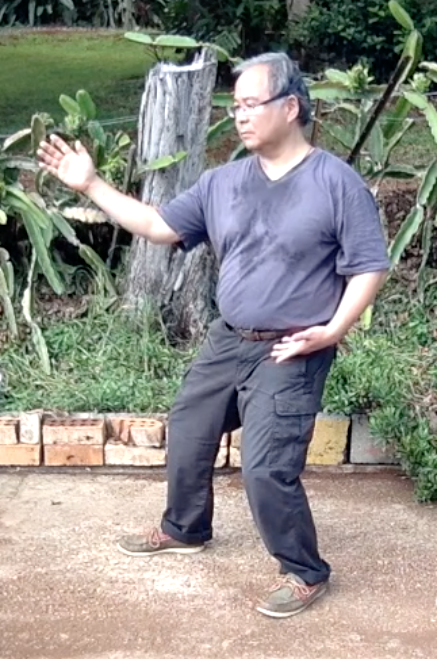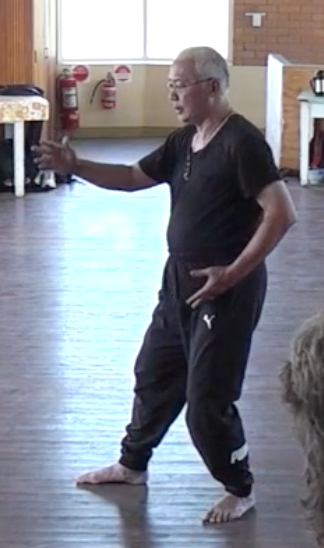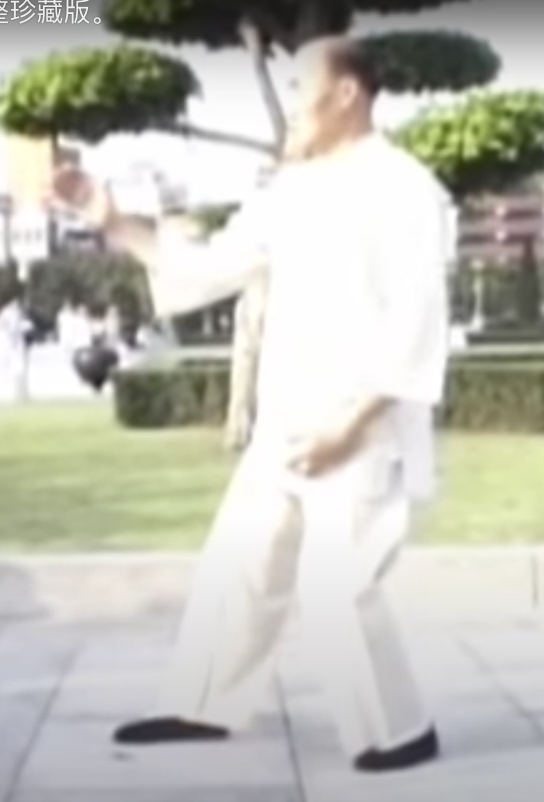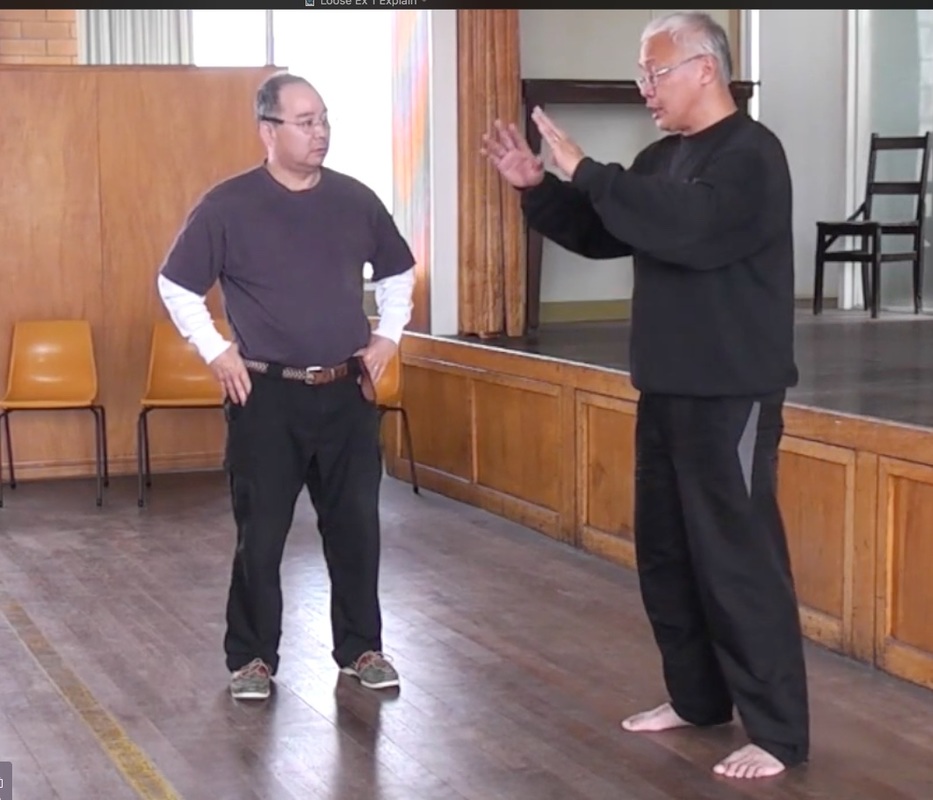He says: "You are simply repeating what all the bullshit fake teachers have palmed off for years worldwide. No, practice does not make perfect. Simply banging one's head against the wall in the hope of finding the secret solution to Fa Jin is only the means of spending another twenty-years of Tai Ji futility while being led up the garden path that leads to nowhere."
Obviously I disagree with Graham's comments (see below) but constructive discussion is welcome. Graham is obviously like most of us quite serious about learning the art of Tai Chi (Chuan) and we want to learn Tai Chi not just for the amazing mind-body-spirit health benefits but to to also reach the higher levels of martial applications (or perhaps just for the "Art"). He reflects a lot of the frustration from people who have invested a lot of time and energy in Tai Chi Chuan conclude and have experienced after decades of practice - particularly when they are doing Free Push Hands...that is his Tai Chi Form practice doesn't work martially.
Learn the fundamentals of 37 Tai Chi Form of the Master Huang System as interpreted by Wee Kee Jin in my Beginners Lessons HERE.
In this position you can feel very frustrated in your own progress and perhaps a bit betrayed that the teachers whom you've searched for, trusted, and looked up to (perhaps put too high up on a pedestal,) were perhaps "faking it" or not being totally honest, or worse still manipulative, or in most cases unaware of their own limitations....I empathise & of course have been there myself. I personally know of many such people & usually most people just give up. But I have access to great, open teachers who can "walk the walk as well as talk the talk" & following them I've made much more progress than I had thought possible so now I believe differently.
To rebuke Graham's scepticism - firstly it sounds like you haven't had the experience of meeting and pushing/touching hands with someone at this level, so you're probably never going to truly believe (from first -hand experience) the stories of "The Classics". And there are very few practitioners who are at the level where they can demonstrate such high skills in a free push situation. That doesn't mean those who haven't reached this level have nothing of value in what they teach, you can always learn something from people who are serious about their art. But... even at this advanced level there are even fewer teachers who you can access personally and who are willing to really accept you as their student and openly share in a hands-on way their knowledge & skills with you. So it's very difficult to find, let alone be a trusted student of a real Tai Chi artist.
Graham and others (not for want of trying) fall in this camp of not having met a teacher who can demonstrate such skills. Because I'd bet that such a teacher would value form practice, you have to ask yourself how did that person achieve such a high level? By neglecting the Tai Chi form altogether? We've all heard of alternative methods such as intense standing post (Yi-Chuan) type of training, or clever "techniques" etc giving people that extra secret edge but why would Taiji Masters past and present always defer to the form? Why did Yang Luchan, Yang Cheng Fu, Cheng Man Ching, Master Huang Sheng Shyan put emphasis & insist on practicing the form? Was it just tradition? Were they just milking their students for more money, or keeping them in place? Why didn't they devise their own shortcut fah jing exercises and just be done with the Taiji set? It'd be simpler and more commercially viable or were they "palming their students off with BS" as Graham describes?
When I hear comments like Graham's I assume that they're talking about their own frustration in their training, knowledge, direction and perhaps arrogance. Yes practicing the set over and over again for decades seems very staid and boring if you are only aware of the external movements. However, if they cling to their sceptical ideas then there's nothing anyone can do, say or demonstrate (even on them) that will change their minds. They have to go their own way....which for me is "oblivion".
If you don't believe that true soft/relaxed power in Taiji works (in other words you don't believe in the Taiji principles as practiced through the Tai Chi form) you'll use an alternative method that will superficially get you the immediate results you want in a free push hands or martial situation. We've all been there, so why bother at all with Taiji? Just lip service for the health and meditation aspect but change back to a hard style or wrestling when doing push hands? There are so many harder martial arts/self defence styles that will get you these short-term results, but you are going to be shown up when you meet someone of better Tai Chi Chuan skill. Your choice...
Learn the fundamentals of 37 Tai Chi Form of the Master Huang System as interpreted by Wee Kee Jin in my Beginners Lessons HERE.
Recently I introduced someone whom I had been teaching for a few lessons
(a beginner to the WKJ Master Huang Style - but someone like Graham who has been seriously practicing for maybe 15 years or more) to an advanced workshop given by one of my teachers. My teacher was generous enough to demonstrate his very light touch on him many times, which cleanly uprooted him repeatedly, no matter how low and stable a stance the beginner took. The beginner was very impressed but still decided not to follow the detailed Taiji system that we teach, of which the 37 Yang Form is an integral part. He said that although my teacher is at a very impressive level he doesn't believe that any of his students could reach those skills. Instead he clung to his belief that greater awareness through deeper meditation in the standing postures and regularly attending a push hands meet was the way to better push hands skill. I'm not downgrading the value of Yi-Chuan standing exercises (they are valuable) but my point is: if you have no faith or belief in the system that good people are telling you about and if you aren't humble enough to accept that they really know what they are talking about well....no one can help you.
Graham says: "I am no authority on Fa Jin, but I am a well practiced expert on what fails and what amounts to 'diddly squat' as you say, after practicing a number of forms and pushing hands drills for twenty-odd years. Thus, I am sufficiently informed to know that the concluding advice given in the last few paragraphs of your essay (training the principles within the Taiji form), and the implied promises given are patently false."
My reply is: sorry Graham, you haven't been practicing the Form nor the pushing hands drills in the right manner for 20 odd years. If you deviate from (or haven't been taught) the correct way or practice the wrong way it doesn't matter how long, or how much practice you do, you'll still miss the mark. The Art of Taijiquan is very subtle & very easy to miss, and no I'm not defaming my teacher, he didn't get his skill from ignoring what Master Huang taught him about the Tai Chi Form - it is a repository of Tai Chi Chuan knowledge, processes and detail.
And as you know with your comment about having practised for 20 odd years, even if you are practicing everything correctly, these advanced skills take a long time to develop. Most people just don't have the motivation or persistence to stay true to quietly practicing the principles in the form, let alone in pair work drills. So we have to remember what Cheng Man Ching said about "investing in loss" and "emptying your cup" - this patient humble mindset is about the fundamental development process that goes on for a long period of time depending on the quality and quantity of your practice. So you're not going to see the "spectacular" fah jing results you want when you engage in free push hands, not for a long time....do you have the patience and persistence? Getting together for some competitive, wrestling-style push hands seems so immediate and relevant as a way to test your skill but it's not the means to develop true fah jing ability. We have to be humble enough to have faith and belief in the system even if the results aren't immediately apparent in free push hands, it will be apparent later. Progress in Tai Chi Chuan is according to the adage: like creating a mountain by layering one tissue on top of another.
So if solitary Taiji practice is a regular part of your life - which it is for all of us - and there are so many additional benefits to practicing the form, why would you neglect it even if you just wanted to achieve the martial skill? When you practice the form accurately, mindful of the principles, correctly and repeatedly you ARE developing the timing, yielding and issuing Tai Chi Chuan that is famous for. You just haven't made the connection between the subtle process of movement within each movement of the form to how it is applied in a free push situation. Here is a video of Master Huang (my teachers teacher) demonstrating how movements in the Taiji form (roll-back, press, push, single whip, shoulder stroke etc) can be applied.
In conclusion, if you find a good, open teacher, don't be a difficult student. Have some respectful humility and follow their system and teachings without cherry-picking (excluding the form) or changing what you're supposed to practice - at least till you fully understand their system...for most dedicated students that's at least ten years. If you think you know more or aren't patient or persistent enough then just follow the next shiny bauble that promises so much, so quickly but don't blame the teacher for being "fake" or "palming off bullshit." Alternately if you're serious about slowly & systematically learning about the fundamentals of this Master Huang Sheng Shyan Yang Style (as taught by Wee Kee Jin) join my "Beginners Lessons" to practice as I do.
Sincerely,
Lee Chang Tye
www.relaxedmindtaichi.com
P.S. - If you have comments please don't reply via email but post them up under this blog in the comments section and please share this material, thanks.
Graham Denney's response to my previous blog post:
“How to train for, and apply Taiji’s practical martial techniques in free push hands”
Lee
Your essay started out very promising - describing the all too familiar breakdown of both the form and ego in a typical Push Hands confrontation in which years of Tai Chi form practice reveals an utterly useless and frankly embarrassing pile of shite.
Up to that point, you had me nodding my head in agreement, Lee, and my interest was aroused with the hope that you were going to point out the fundamental training methods that are absent in the 'form' and, more crucially, absent in the teaching methods of 99.9% of all commercially available Tai Ji 'teachers'.
However, as I read on, your once promising essay degenerated into an incredibly misleading explanation that, with ambiguity and wishful thinking, leads the reader back on the cyclical path of ignorance and delusion. That path of not knowing for which, even after twenty-years of practice in like manner - as you suggest - will result in an utter lack of real Tai Ji power. In fact, Lee, I'm somewhat surprised and perplexed that your Sifu permitted you to publish these kind of misleading delusions your essay betrays - exposing him to the possibility of defamatory remarks and so on.
I am no authority on Fa Jin, but I am a well practiced expert on what fails and what amounts to 'diddly squat' as you say, after practicing a number of forms and pushing hands drills for twenty-odd years. Thus, I am sufficiently informed to know that the concluding advice given in the last few paragraphs of your essay, and the implied promises given are patently false. You are simply repeating what all the bullshit fake teachers have palmed off for years worldwide. No, practice does not make perfect. Simply banging one's head against the wall in the hope of finding the secret solution to Fa Jin is only the means of spending another twenty-years of Tai Ji futility while being led up the garden path that leads to nowhere.
I could say more, but I'm afraid I've run out of time . . .




 RSS Feed
RSS Feed